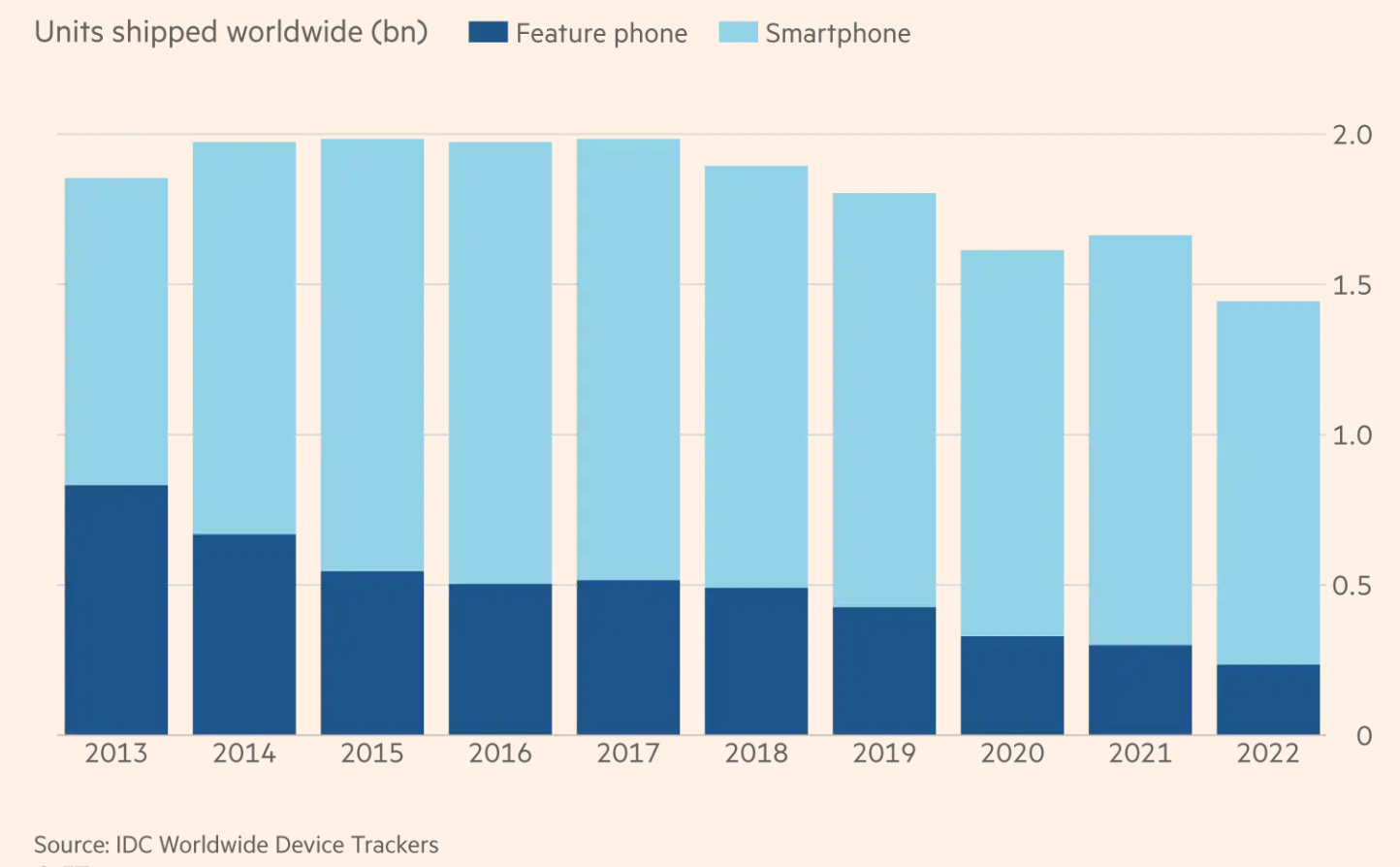From Europe to BRICS and Asia to dumb phones
We explore China's FDI state, while we have a look at George Soros's foundation, India's growth in smartphone production and BRICS new "agenda". Finally, we look at "dumb" phones
Net decline in China’s FDI
First comes the facts - The net foreign direct investment in China has been coming down over the past two years, as depicted through the below chart (source: Bloomberg).
Now comes the root causes behind the same:
Many experts and analysts are attributing to the changing balance of power since the Ukraine invasion by Russia. The tensions between the Western powers with China has always been on the surface - but with China kind of siding with Russia has now made it quite a sore point with US and other Western nations
Some of the experts cite the zero-tolerance policy adopted by China during Covid - a policy that shut down the global manufacturing centers (read as China) even when the Covid threat was limited in certain cities. The disruption in the global supply chain till date has probably “awakened” a lot of corporations to have a mitigation strategy and not rely solely on China
Finally, some also point to the increasing state-interference in the private corporations in China, which till a couple of years ago, enjoyed more “freedom” to operate and take independent decisions. Now it is told that not just the state is intervening in decision making, but apparently the employees of both state run and privately run organisations are having mandatory sessions on President Xi’s philosophy with the intention that everyone needs to be ultimately following that at the end of the day
George Soros moving out of EU ?
George Soros and his foundation, responsible of pumping in milllions of dollars in specific countries whose policies are not in “agreement” with his philosophy, are often looked at with suspicion by many.
After his foundation has spent more than $19 billion across the world, it looks like that his son, now running the foundation, is set to end a large part of their operation in the European Union, by announcing a headcount reduction of 40% at the foundation.
However, it’s expected that the foundation’s operations are likely to continue in Eastern Europe and Asia.
India growing in smartphone manufacturing
As per a report from Counterpoint Research, India's 'Make in India' initiative has led to the country shipping 2 billion smartphones and feature phones that were assembled domestically. Consequently, India has now become the world's second-largest producer of mobile phones.
In the year 2022, over 98% of all shipments in the Indian market were products that were 'Made in India'. This is a substantial increase from the 19% recorded when the current government assumed office in 2014.
The number of brands engaged in smartphone and feature phone assembly within India has surged to approximately 200, a remarkable rise from just two in the year 2014. Apple, a prominent contributor, has witnessed its 'made in India' handset share climb to 25%, doubling the share from the previous year.
Although there has been notable growth in local value addition—from a mere low single-digit percentage in 2014 to the current 15%—this figure remains relatively modest due to significant dependence on the Chinese supply chain by various manufacturers. These manufacturers largely import components that are subsequently assembled within India.
BRICS in “growth” path?
22 countries have expressed their interest formally to join the BRICS
Another 20 countries have also expressed their interest informally in joining BRICS
BRICS nations such as Russia, China & Brazil have called for the bloc to challenge the US dollar’s status as the world’s reserve currency
Discussions were underway for Saudi Arabia's potential membership in the New Development Bank, an institution established by the Brics nations in 2014 as a substitute for the World Bank. This institution was later joined by Egypt, Bangladesh, and the United Arab Emirates.
Dumb phones are growing in numbers?
It’s a fact that addiction to smartphones are increasing over last few years, with an average American spending consuming 20% hours per day in 2022, which has increased by 33% since 2019. The current numbers do indicate that smartphones dominate today’s market - so called limited “featured phones” constituting just 16% of total phone shipment in 2022, which is a sharp contrast from 45% in 2013.
However, there are a lot of new players in the market who are now concentrating on making “dumb” phones:
HMD Global (owner of Nokia phones) have modernized version of the classic 6310 "brick phone", which has shown a 2x increase in sales from 2021 to 2022.
Punkt, headquartered in Switzerland, and Light, based in New York, both produce sophisticated and high-end non-smart phones that retail for around $300.
Gabb, a company established five years ago, specializes in selling phones designed exclusively for children, deliberately excluding web and app browsing capabilities.
In addition, entities such as Bark or Pinwheel offer smartphones with comprehensive built-in parental controls, empowering parents to oversee their children's communications effectively.






